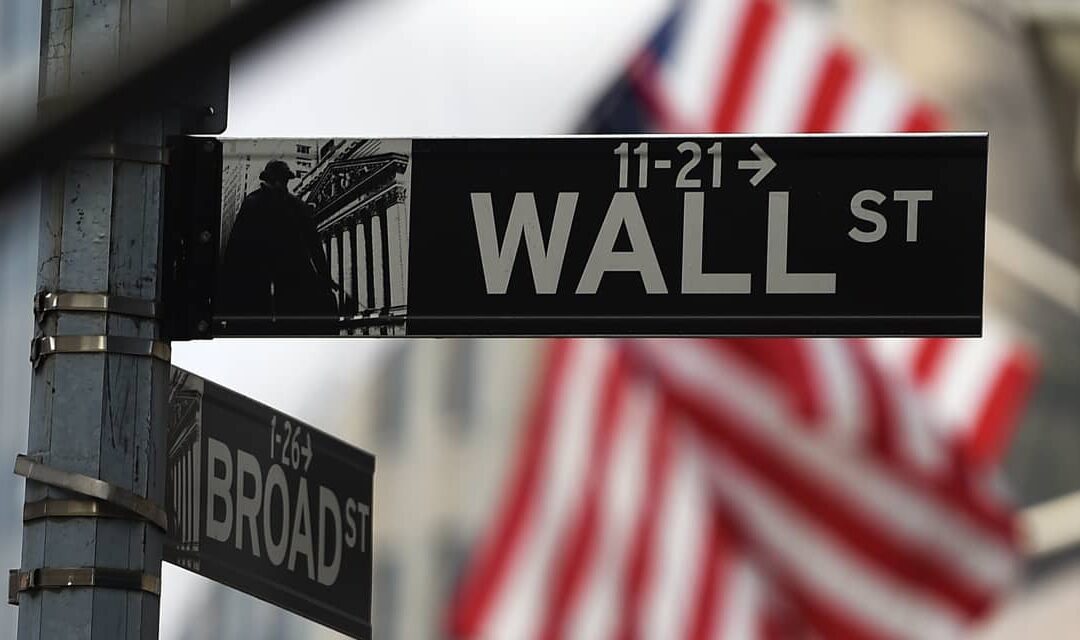The case for investing in a classic portfolio of 60% stocks and 40% in bonds has strengthened, with the rise in interest rates translating into higher fixed-income returns, according to Vanguard Group.
“For long-term investors in balanced portfolios, the probability of achieving a 10-year annualized return of at least 7%, the post-1990 average, has risen from 8% in 2021 to 40% today,” Vanguard said in its 2024 outlook report on markets and the economy.
“The transition to a higher interest rate environment no doubt has challenged investors, who have endured historical losses in bonds and high volatility in stocks,” the asset manager said. “But make no mistake: This structural shift, which will endure beyond the next business cycle, is the single best economic and financial development in the last 20 years.”
Bond yields have risen amid tighter monetary policy aimed at stomping out inflation, with the Federal Reserve rapidly lifting its benchmark interest rate to a 22-year-high target range of 5.25% to 5.5%, from near zero in early 2022. But even after the Fed eventually cuts rates, Vanguard expects investors will be navigating a higher-rate environment.
“After policy rates recede from their cyclical peaks, we expect rates to settle at a higher level than we had grown accustomed to before the COVID-19 pandemic,” the firm said. “Zero interest rates are gone.”
In “a return to sound money,” higher rates will force governments to reassess the sustainability of their fiscal situations while encouraging saving and limiting borrowing among households and businesses, according to Vanguard’s outlook report.
And now, “bonds are back,” the asset manager says.
“Higher interest rates mean higher returns for long-term bond investors,” said Vanguard. “We now expect U.S. bonds to return a nominal annualized 4.8%–5.8% over the next decade, compared with the 1.5%–2.5% we expected before the rate-hiking cycle began.”
Bonds were pummeled by rising rates in 2022 but now those higher levels will pay off, according to Vanguard.
“If reinvested, the income component of bond returns at this level of rates will eventually more than offset the capital losses experienced over the last two years,” the firm said. “By the end of the decade, bond portfolio values are expected to be higher than if rates had not increased in the first place.”
Read: Classic ’60-40′ mix of stocks and bonds surges in November, heads for best performance since 2020, Bespoke finds
The Vanguard Total Bond Market ETF
BND,
which tracks U.S. investment-grade fixed-income assets, has returned 2.9% this year on a total return basis through Monday, according to FactSet data. The fund has performed much better than last year, when it saw a total loss of 13.1% as the Fed aggressively hiked rates to battle surging inflation.
“We see U.S. aggregate bonds and intermediate Treasuries specifically as close to fair value,” Vanguard said.
The Vanguard Intermediate-Term Treasury ETF
VGIT
has gained a total 2% this year through Monday, after tanking 10.5% in 2022 on a total return basis, FactSet data show.
Equities ‘overvalued’
Meanwhile, U.S. equities are more “overvalued” than a year ago, particularly growth stocks, according to Vanguard.
“A higher-rate environment depresses asset price valuations across global markets while squeezing profit margins as corporations find it more expensive to issue and refinance debt,” the firm said. “The global equity risk premium that emerges from current stock and bond market valuations is the lowest since the 1999–2009 “lost decade.”
The S&P 500 index
SPX
has jumped 20.4% this year through Monday, when it finished at its highest value since late March 2022.
Vanguard has downgraded its U.S. equity return expectations to an annualized 4.2%–6.2% over the next decade, from 4.4%–6.4% heading into 2023, according to its report.
“Within the U.S. market, value stocks are more attractive than they have been since late 2021, and small-capitalization stocks also appear attractive for the long term,” the firm said.
The ‘last mile’ for inflation
The Fed, which has been aiming to bring down inflation to its 2% target through higher rates, will release its next policy statement on Wednesday.
Vanguard expects the Fed to begin easing policy in the second half of 2024, cutting its policy rate below 4% by the end of next year, according to the asset manager’s outlook report.
“Despite significant progress on inflation and strong economic growth, we believe a ‘soft landing’—where inflation returns sustainably to the Federal Reserve’s target absent weakness in demand—is unlikely,” said Vanguard. “The last mile on the path to 2% inflation will be the most difficult.”








